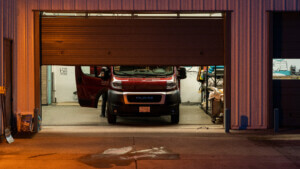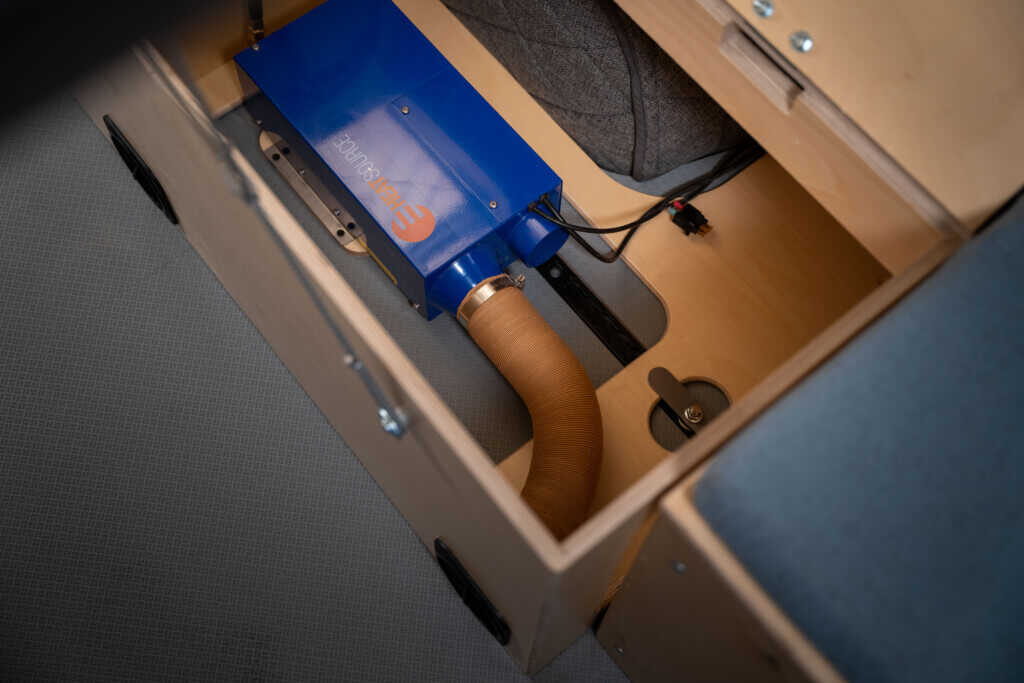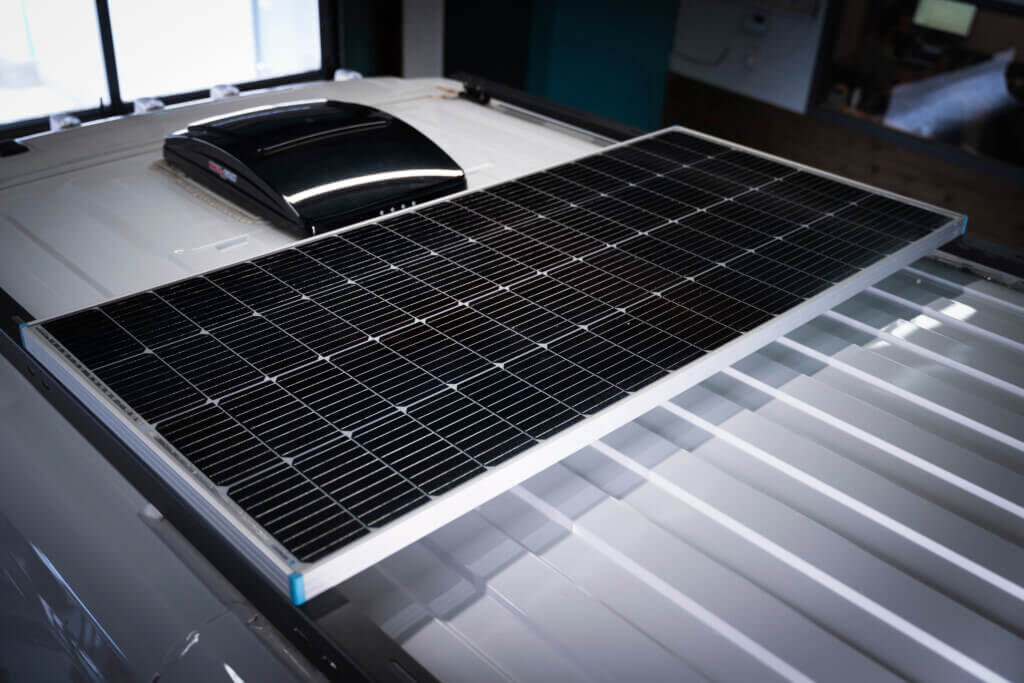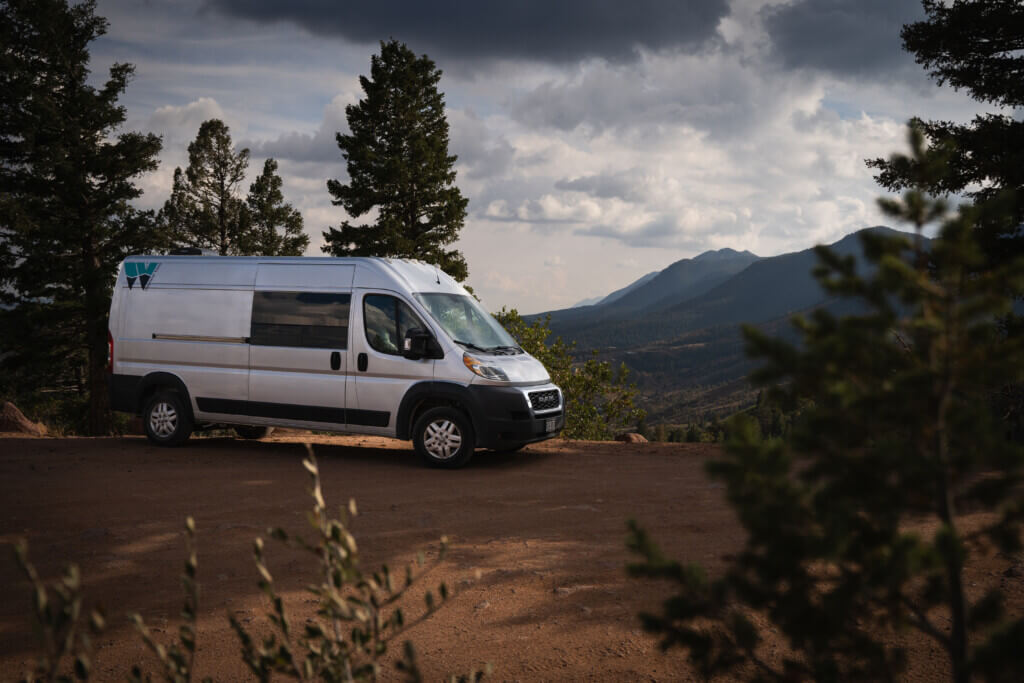Walter
RAM ProMaster
136″ WHEELBASE, HIGH ROOF
Getting your Wayfarer is refreshingly simple. We don’t do complicated systems. We don’t go over the top with bells and whistles. But what happens after you drive off? How much time and money does it really take to keep your van humming along?
Good news – it doesn’t take much.
We’re big believers in simplicity. Your camper van should make travel easier, not add to your to-do list. From our thoughtfully designed conversions, to our choice to build on the RAM ProMaster and Ford Transit vans, everything that leaves our shop is meant to be low-maintenance and worry-free.
But just like anything you love: your bike, your boots, or your garden, your van needs a little TLC along the way. After 10 years of building and owning vans, we’ve learned what really matters when it comes to keeping things running smoothly.
We only convert two types of vans: the RAM ProMaster and Ford Transit. Both are known for their reliability, so when you hit the road in a Wayfarer, you’re in good hands for the long haul.
And when you do need service? Just about every small town has a mechanic who knows how to work on your RAM or Ford. Whether you head to a dealership, independent mechanic or a quick-lube chain, chances are you’ll find someone who can help. Parts are easy to find too, so you won’t find yourself hunkered down in a hotel for days on end, or footing a four-figure towing bill. And for our friends who went the other direction with big RV motorhomes or Sprinter vans, best of luck getting your service done quickly at a Jiffy Lube 😬

How often your vehicle needs regular maintenance will vary depending on how much you drive. But these milestones will help you make sure you have your bases covered along the way. Regular maintenance on your van can help avoid costlier repairs down the line.
Before every trip:
Every 8–10k miles (or at least twice a year):
Every 15–30k miles:
Every 40–60k miles:
Every 60–100k miles:
We recommend keeping a record of your maintenance in whatever format makes sense for you. That might be a notebook in the glove compartment, a notepad file on your phone, or an Excel sheet on your laptop: however you like to stay organized.

Don’t worry, your Wayfarer conversion requires so little attention, that we hesitate to call it “maintenance” at all. But with just a little regular care, you’ll keep things looking great and working smoothly for years to come.
After each trip:
Twice a year:
Give your accessories some love
Depending on what items you have, you’ll need to add a few more things to your biannual checklist. A little love will keep things humming along smoothly for years to come:



If your lifestyle calls for leaving the van parked in one spot for a long time – around three months or more, you can take a few extra steps to help keep your van in top shape. The best approach for your van will depend on how long it’s sitting and what type of environment you live in.
Having a few tools in your van will help you handle maintenance issues that may pop up along the road. We keep the following packed in our vans:
There is not a one-size-fits-all answer. Costs can vary depending on whether you go to a dealership, independent mechanic, or go the DIY route. And your location can make a difference too.
There are multiple websites out there that estimate the cost of maintenance for the vehicle’s life. But keep in mind that those numbers include everything from a lightly used camper van to a commercial delivery van that is driven all-day, every-day with lots of stops.
That said, for both the ProMaster and Transit vans, the average maintenance and repair in the first five years typically sits around $4,500-6,000, or $1,000 to $1,200 annually. That includes everything from oil changes and tire rotations (about $150-200 per service), to scheduled maintenance and the occasional bigger repair.
A good rule of thumb is to budget $75-$100 per month. If you do that, you should be in a good spot to stay on top of your van’s maintenance needs.
Owning a camper van doesn’t mean you are signing up for a mountain of maintenance. One of the best parts of owning a Wayfarer is how simple and stress-free it is to care for. Whether you are a weekend warrior, or a full-time van dweller, a little regular TLC goes a long way. Stay on top of your basic maintenance, plan ahead for the occasional bigger service, and you’ll enjoy a reliable, adventure-ready rig for years to come.
